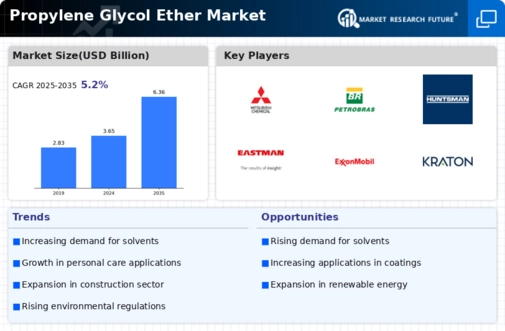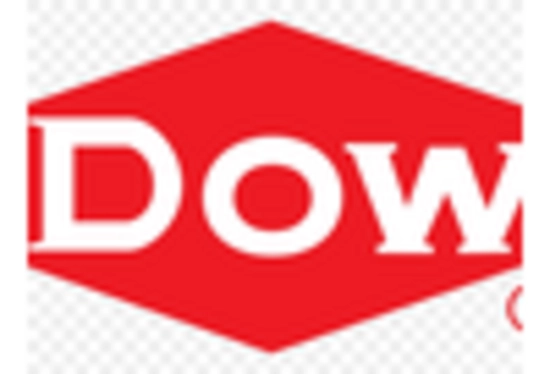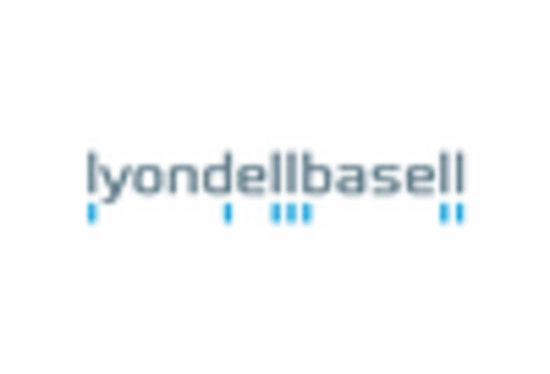Expansion in Personal Care Products
The Propylene Glycol Ether Market is significantly influenced by the expanding personal care and cosmetics sector. With consumers becoming more conscious of product ingredients, there is a growing demand for safe and effective formulations. Propylene glycol ethers are favored for their ability to act as solvents, emulsifiers, and skin-conditioning agents. The personal care market is anticipated to surpass USD 500 billion by 2025, with propylene glycol ethers being integral to the formulation of various products, including lotions, shampoos, and makeup. This expansion underscores the importance of propylene glycol ethers in meeting consumer expectations for quality and safety.
Growth in the Pharmaceutical Sector
The Propylene Glycol Ether Market is witnessing growth driven by the pharmaceutical sector's increasing reliance on these compounds. Propylene glycol ethers are utilized in drug formulations, serving as solvents and carriers for active ingredients. The pharmaceutical market is projected to reach USD 1.5 trillion by 2025, with propylene glycol ethers playing a vital role in enhancing drug solubility and bioavailability. This trend suggests a robust demand for high-quality excipients, thereby bolstering the Propylene Glycol Ether Market. As the industry evolves, the need for innovative and effective pharmaceutical solutions will likely continue to drive market growth.
Rising Demand in Paints and Coatings
The Propylene Glycol Ether Market is experiencing a notable increase in demand from the paints and coatings sector. This growth is primarily attributed to the rising preference for eco-friendly and low-VOC (volatile organic compounds) formulations. As manufacturers strive to meet stringent environmental regulations, propylene glycol ethers are increasingly utilized as solvents and additives. The market for paints and coatings is projected to reach approximately USD 200 billion by 2026, with propylene glycol ethers playing a crucial role in enhancing product performance and stability. This trend indicates a shift towards sustainable practices, thereby driving the Propylene Glycol Ether Market forward.
Technological Innovations in Manufacturing
Technological advancements in the production of propylene glycol ethers are significantly impacting the Propylene Glycol Ether Market. Innovations in manufacturing processes, such as improved catalytic methods and enhanced purification techniques, are leading to higher efficiency and lower production costs. These advancements not only increase the availability of high-purity products but also contribute to sustainability efforts by reducing waste and energy consumption. As manufacturers adopt these technologies, the market is expected to witness a surge in the availability of propylene glycol ethers, thereby meeting the growing demand across various applications. This trend indicates a promising future for the Propylene Glycol Ether Market.
Increasing Applications in Industrial Cleaning
The Propylene Glycol Ether Market is benefiting from the rising applications of these compounds in industrial cleaning products. As industries seek effective and environmentally friendly cleaning solutions, propylene glycol ethers are increasingly used due to their excellent solvency and low toxicity. The industrial cleaning market is projected to grow significantly, with propylene glycol ethers being integral to formulations for degreasers, detergents, and surface cleaners. This trend highlights the versatility of propylene glycol ethers and their role in meeting the stringent cleaning requirements of various sectors. Consequently, the Propylene Glycol Ether Market is poised for continued growth as demand for industrial cleaning solutions rises.

















Leave a Comment